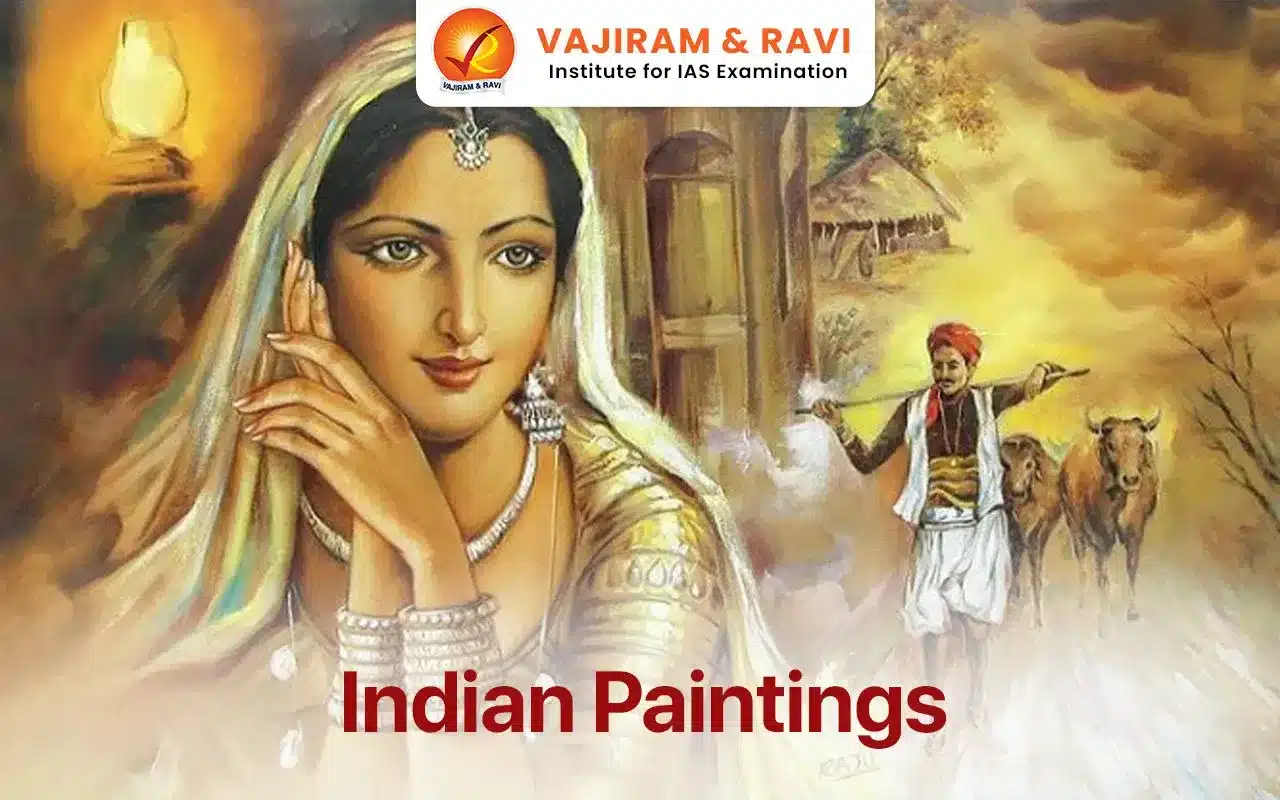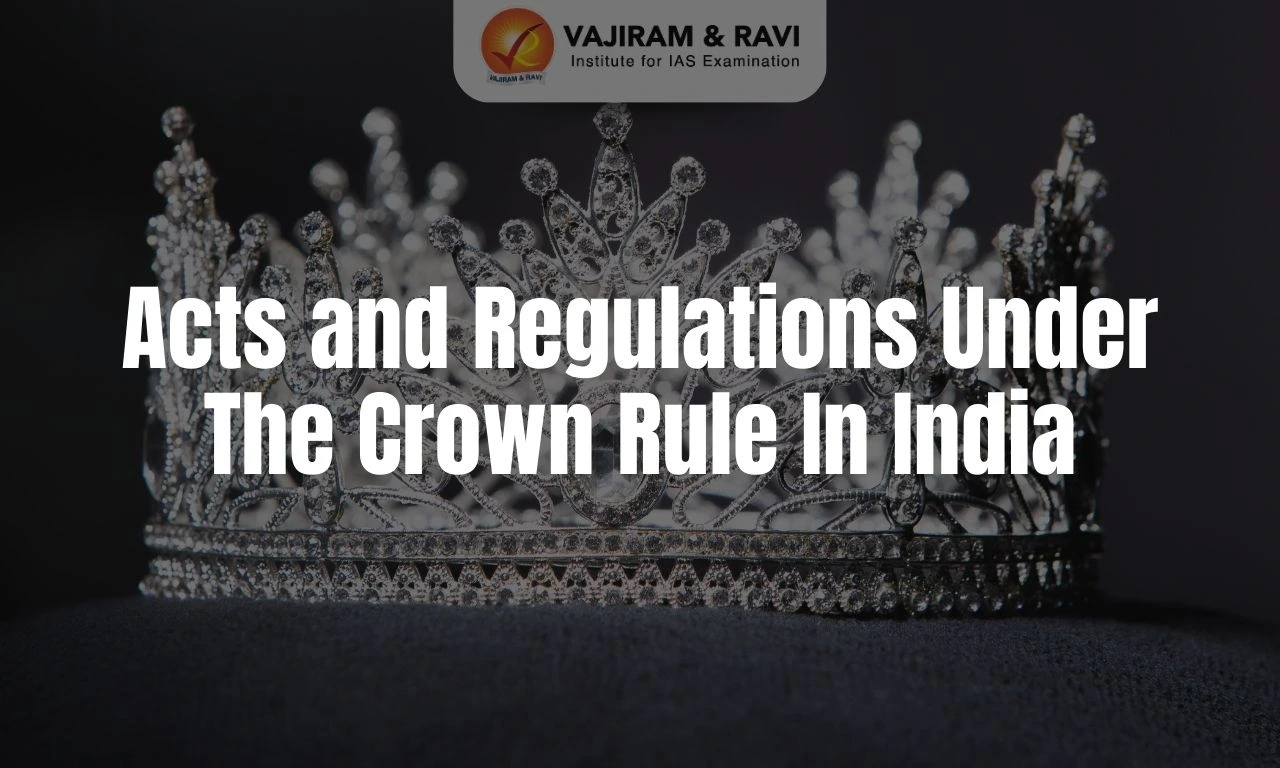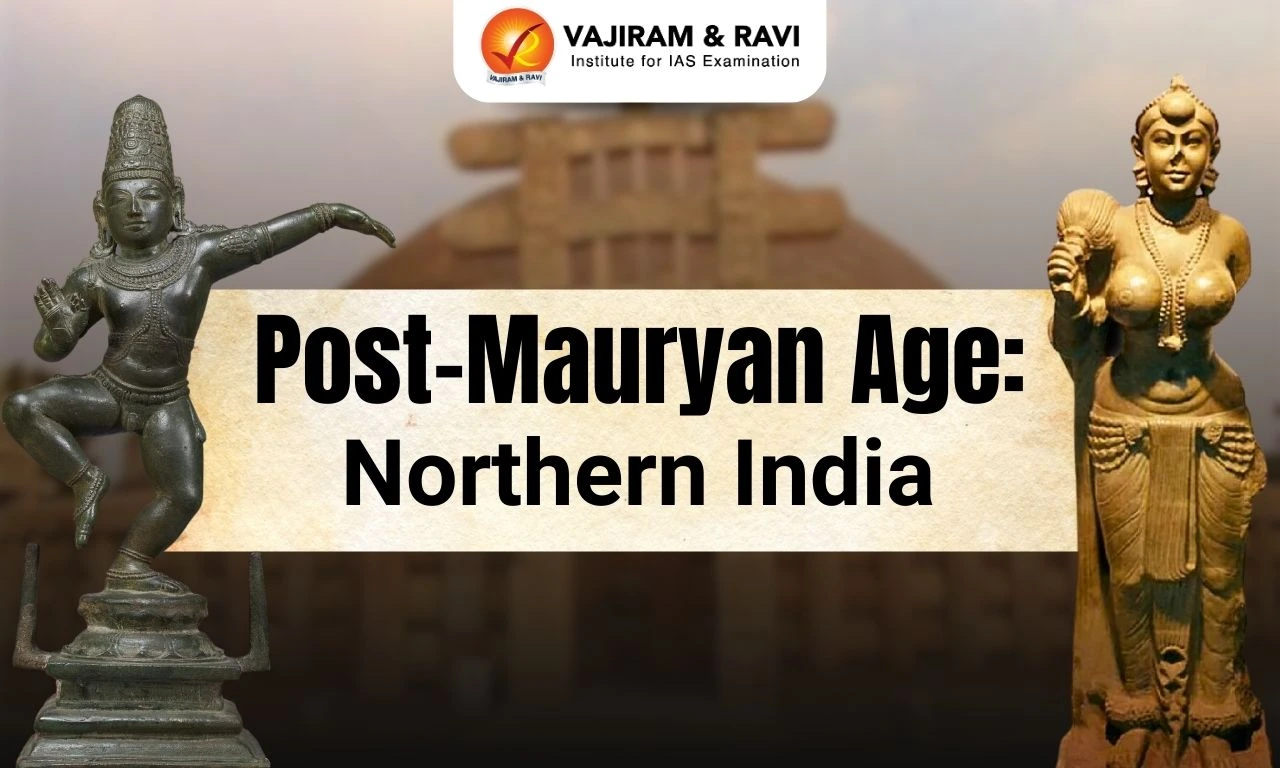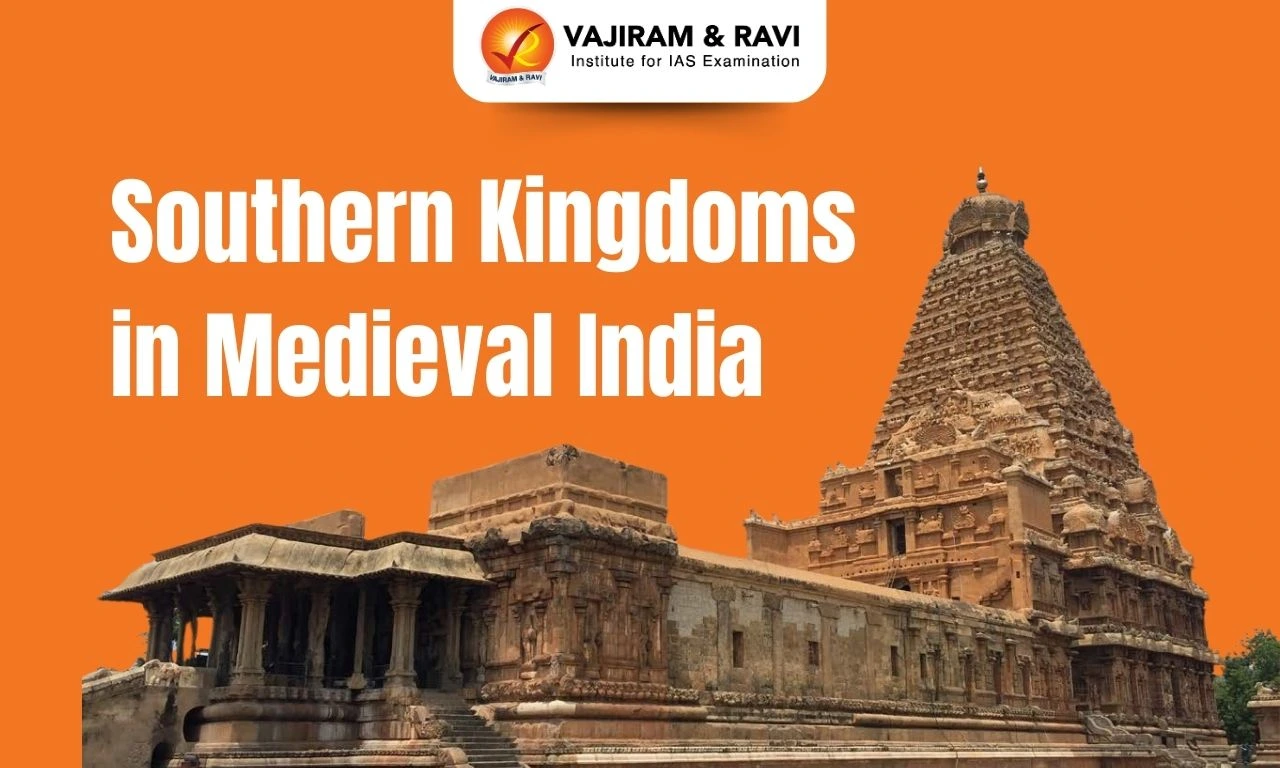Painting as an art form has flourished in India since prehistoric times, as evident from the remains recovered in caves and other literary sources. Indian paintings are primarily classified as murals and miniatures. Murals are large works executed on walls and ceilings whereas; miniature paintings are executed on books, paper and cloth.
Indian painting is the outcome of a fusion of diverse traditions, and its evolution is an ongoing process. Despite adapting to new trends, Indian painting has retained its distinct character.
Shadangas of Indian Art (Six Limbs)
India has an astonishingly rich variety of painting traditions. The word Shadanga means one of the rules of the art of painting written in the ancient period. Shadanga or six principles explicates the theory of traditional Indian painting.
| Shadanga or Six Principles of Indian Art | |
| Rupa-bheda (secrets of the form) |
- Roopa refers to a subject's outer form or look. Bheda, on the other hand, refers to distinction. - Roopbheda allows an artist to see and depict things exactly as they appear. |
| Pramanani (proportion) |
- Pramamani teaches subjects accurate measurements, proportions, and distances. - It also provides insight into the subjects' structural anatomy. |
| Bhava (emotional disposition) |
- BHAVA means an emotion. This facet of art is represented in the form of feelings expressed by the subject. - Bhava offers the painting much-needed movement. |
| Lavanya-yojanam (gracefulness in composition) | - It enhances the beauty and grace of artefacts. Rabindranath Tagore has elaborated on the Lavanya Yojnam in his "Six Limbs of Indian Painting. |
| Sadrisyam (similitude) | - It indicates the degree to which a depiction resembles an artist's vision or the subject itself. In certain ways, it represents similitude. |
| Varnika-bhanga (colour differentiation) | - It means the use of colour in artistic style to create an aesthetic sense. |
Prehistoric Paintings
The earliest known paintings in India date back to the Upper Palaeolithic period. The history of art and painting in India begins with prehistoric rock paintings at Bhimbetka caves (M.P.).
- Bhimbetka's rock art has been divided into several categories based on style, technique, and superimposition.
- The rock shelters on the banks of the River Suyal at Lakhudiyar bear another prehistoric painting.
- The richest paintings have been reported from the Vindhya ranges of Madhya Pradesh and their expansion to the Kaimur range.
| Prehistoric Paintings | |
|
Upper Paleolithic Period |
- Linear representations, in green and dark red, of huge animal figures, such as bison, elephants, etc. besides stick-like human figures. |
|
Mesolithic Period |
- During this phase, the themes expanded, but the paintings got smaller in size. Hunting scenes predominated. - Animals such as elephants, bison, tigers, boar, deer, etc, and at times birds were also depicted. - Animals were painted in a naturalistic approach, whereas humans were simply shown stylistically. - Community dances provided a common theme. |
|
Chalcolithic Period |
- Chalcolithic ceramics and rock paintings bear common motifs, e.g., cross-hatched squares, and lattices. - Pottery and metal tools were also shown. - The artists of Bhimbetka used many colours such as shades of white, yellow, orange, red ochre, purple, brown, green, and black. - The artisans painted the walls and ceilings of the rock shelters. |
Mural Painting Tradition
Mural painting, known as Bhittichitra in Indian texts, is a distinguished form of artistry applied to walls and ceilings, particularly within rock-cut architecture (caves) and structural temples. The story of Indian murals starts around the second century BCE and spread across India. Examples of mural painting are Ajanta, Ellora, Bagh and Sittanavasal in the early mural tradition, continued by Chalukyan of Badami, Pallvas, Cholas and Vijayanagara empires later.
- Ajanta Paintings:
- The Ajanta murals, which date from the 2nd century BCE to the 7th century CE, were patronised by the Satavahanas, Vakatakas, and Guptas.
- These paintings are renowned for their imaginative creation of figures by the artists.
- Ajanta is home to 29 caves, including unfinished ones.
- The most famous murals of the Ajanta caves are the paintings of Padmapani and Vajrapani bodhisattvas and of Mahajanaka and Umaga Jatakas.
- The influence of the Ajanta style extended through South India and even reached Sri Lanka, persisting until the 10th century CE.

- Ellora caves: 34 monasteries and temples were constructed between the 5th and 10th centuries and dedicated to Hinduism, Buddhism, and Jainism.
- Mural paintings are preserved only in the Kailasa Temple.
- Some of the examples of paintings are of Vishnu and Lakshmi with Garuda, flying Apsaras, Saiva holy men, etc.
- Bagh Caves: Situated 97 km from Madhya Pradesh’s Dhar district, the Bagh caves feature Buddhist murals carved during the Satavahana period.
- Badami caves: The 6th-century Vishnu cave in Badami, Karnataka, showcases remnants of murals on its vaulted front mandapa (pavilion).
- These paintings, depicting palace scenes, signify the continuation of the mural tradition from to South India.Ajanta
- Pallava Paintings: Pallavas continued the Ajanta tradition in technique, use of materials, and treatment of figures in their paintings.
- Example: Jaina paintings-cave temple Sittanavasal in Tamilnadu.

- Rashtrakuta: The paintings at Ellora cover the ceilings and walls of the mandapas, representing various themes of Shiva Purana.
- Special features: The peculiar placement of the eyes and the angular nose became the artistic element of Jain manuscript paintings in the 12th century CE.
- This is the last example of the paintings done in the Ajanta style of mural painting.

- Cholas: There are fragments of early Chola paintings in Narthamalai, Malayadipatti, and other places.
- Example: Brihadisvara temple at Tanjore. There are two layers of paintings on the walls exhibiting a style of South Indian tradition of painting.
- Vijayanagar Paintings: Their style of painting was a continuation of the earlier Chola and Pandyan traditions.
- Example: Virupaksha temple at Hampi. The murals depict the procession of the sage Vidyaranya. The paintings of Tripurantaka, Narasimha, and the scene of Girija Kalyana are other remarkable panels.

- Nayaka Paintings: Nayaka rulers at Madurai and Tanjore continued the tradition of Vijayanagar in every way.
- Their paintings are seen at Tanjore, Tenkasi, and Perur, and exhibit elaboration in costume, ornamentation, and addition of sculptural details.

- Cheras’ paintings: The interiors of the temples and palaces are covered with colourful murals and wood carvings.
- These paintings influence the Vijayanagar tradition combined with vibrant expression.
- Example: Paintings at Padmanabhaswamy Temple at Trivandrum and Vadakkunatha Temple at Thrissur.

- Mysore Paintings: The murals in and around Mysore are the last phase in the history of mural paintings in India.
- The largest mural paintings depict the Mysore war between the Tipu Sultan and the British.

Miniature Paintings
The miniature paintings have their origin in the illustrated manuscript painting tradition. They resemble the Ajanta style but on a miniature scale.
- Pala miniature: In India, the miniature paintings emerged during the Pala period (8th- 12th century).
- Illustrated manuscripts on the palm leaves have been found in Nalanda, Kurkihar (Gaya), etc.
- Persian Influence: In the fifteenth and sixteenth centuries, illustrated manuscripts with Persian influences were created in Malwa, Bengal, Delhi, Jaunpur, Gujarat, and the Deccan.
- The connection of Indian artists with Persian traditions led to the fusion of the two styles, as seen in the paintings of the sixteenth century.

- Mughals: Akbar and his successors made dramatic improvements in painting and sensual illustrations. Individual miniatures began to take over wall painting around this time. For the first time, inscriptions included the names of the painters.
- Some great painters of this period were Abd-us-Samad Dasawanth and Basawan.
- The art of painting reached its climax during the period of Jahangir. Artists began to use vibrant colours and were able to give three-dimensional effects to paintings.

- Regional Schools of Miniature Paintings: The lack of royal patronage for painting under Aurangzeb resulted in the spread of artists throughout the country.
- This helped in the development of distinct schools of painting such as Rajasthani and Pahari schools.
| Major Schools of Miniature Paintings | |
|
Mughal School  Mughal painting developed in the northern Indian subcontinent in the 16th to mid-19th century. It is known for its sophisticated techniques and a diverse range of subjects and themes. |
Rajasthani School  Early Rajasthani paintings come from Malwa, Jaunpur, and Mewar between the 16th and early 19th centuries. |
|
Pahari School  Pahari Schools of Painting includes towns, such as Basohli, Guler, and others in the hills of the western Himalayas, which emerged as centres of painting from the 17th-19th century. |
Deccani School  The Deccani school is an offshoot of the Mughal miniature school. Early Deccan paintings are influenced by Ellora murals, Mewar, and Malwa miniature traditions. |
Folk Paintings
Folk painting traditions originate in specific regions formed by geography and climate. These traditions are shaped by distinct regional cultures.
| Folk Paintings | |
|
Madhubani painting  Madhubani painting (Mithila folk art) is the traditional art of the Mithila region of Bihar. They are made by village women who create 3-D images with vegetable hues and a few earthen pigments. |
Kalamkari Painting  Kalamkari is a painting done by Kalam (pen). These paintings are made in Andhra Pradesh. It is hand-painted and block-printed with vegetable dyes applied on cloth. |
|
Patachitra Painting  The Patachitra is the traditional painting of Odisha dedicated to Lord Jagannath of Puri. |
Kalighat Painting  Kalighat painting is done with watercolour on mill-made paper primarily by scroll painters-cum-potters who had migrated from Bengal to the city of Kolkata. |
|
Phad painting  It is practised primarily in certain villages of Rajasthan by members of the Joshi clan of the Chhipa caste and narrates the deeds of regional hero gods. |
Thangka Paintings  This Tibetan Buddhist painting usually depicts a Buddhist deity or stories on cotton or silk. It is prevalent in Sikkim, Himachal Pradesh, Ladakh and Arunachal Pradesh. |
Tribal Paintings
The simplest art in any tribal society is that of wall painting. They depict the simple beliefs of the community and provide information about myths, religious beliefs, local heroes, epics, customs and rituals.
- These paintings are done to invoke the divine blessings for fertile soil, healthy offspring protection from evil forces etc.
- Tribes notable for their paintings include the Bhils, Gonds, Murias, Sauras, Warlis, and Rathwas.
- Some of the tribal paintings are Pithora, Warli, Santhal and Saura.


Rise of Modern Paintings
In the late 18th and early 19th centuries, paintings comprised semi-westernised local styles that were patronised by British residents and visitors.
- Themes: Themes were primarily inspired by Indian social life, prominent festivals, and Mughal architecture. These exemplified the impromptu Mughal traditions.
- Examples: Examples of exceptional paintings from this period include Shaikh Zia-ud-Din's bird studies for Lady Impey and Ghulam Ali Khan's portraits of William Fraser and Colonel Skinner.
- In major Indian cities like Calcutta, Bombay, and Madras, European-style art schools were introduced in the late nineteenth century.
- Oil paintings of Raja Ravi Varma of Travancore depicting mythological and social themes became highly popular at this time.

- Bengal School of Art: At the beginning of the 20th Century, the artists of Bengal under the leadership of Rabindranath Tagore and Nandalal Bose protested against the British by refusing to paint in Western style.
- Instead, they visited Ajanta and explored the possibilities of painting in an Indian way by using natural, powder colours.
- The woman artist Amrita Sher Gill and the Noble Laureate Rabindranath Tagore gave an insight into the universality of Indian art.

- In 1943, Calcutta painters led by Paritosh Sen, Niroda Majumdar and Pradosh Dasgupta formed a group that depicted the condition of the people of India through new visual language, and novel techniques.
- Progressive Artists Group in Bombay: In 1948, the Progressive Artists Group in Bombay was formed under Francis Newton Souza.
- This group broke out from the Bengal School of Art and symbolises the modern forceful art of independent India.

- In the 1970s, artists' daily interactions with poverty and corruption, the country's political quagmire, explosive community tension, and other issues became their themes.
- Madras School of Art under Debi Prasad Roy Chowdhury and K.C.S Paniker emerged as an important art centre in the post-independence period and influenced a new generation of modern artists.

- Modern Indian artists: Tyeb Mehta, Satish Gujral, Krishan Khanna, Manjit Bawa, K.G. Subramaniyan Ram Kumari, Anjolie Ela Menon, Akbar Padamsee, Jatin Das, Jehangir Sabavala and A. Ramachandran.

Indian Paintings UPSC PYQs
Question 1: The painting of Bodhisattva Padmapani is one of the most famous and oft-illustrated paintings at: (UPSC Prelims 2017)
- Ajanta
- Badami
- Bagh
- Ellora
Answer: (a)
Question 2: Kalamkari painting refers to (UPSC Prelims 2015)
(a) a hand-painted cotton textile in South India
(b) a handmade drawing on bamboo handicrafts in North-East India
(c) a block-painted woollen cloth in Western Himalayan region of India
(d) a hand-painted decorative silk cloth in North-Western India
Answer: (a)
Question 3: Consider the following historical places: (UPSC Prelims 2013)
- Ajanta Caves
- Lepakshi Temple
- Sanchi Stupa
Which of the above places is/are also known for mural paintings?
(a) 1 only
(b) 1 and 2 only
(c) 1, 2 and 3
(d) None
Answer: (b)
Question 4: Mesolithic rock cut architecture of India not only reflects the cultural life of the times but also a fine aesthetic sense comparable to modern painting. Critically evaluate this comment.[200 Words] (UPSC Mains 2015)
Last updated on December, 2025
→ Check out the latest UPSC Syllabus 2026 here.
→ Join Vajiram & Ravi’s Interview Guidance Programme for expert help to crack your final UPSC stage.
→ UPSC Mains Result 2025 is now out.
→ UPSC Notification 2026 is scheduled to be released on January 14, 2026.
→ UPSC Calendar 2026 is released on 15th May, 2025.
→ The UPSC Vacancy 2025 were released 1129, out of which 979 were for UPSC CSE and remaining 150 are for UPSC IFoS.
→ UPSC Prelims 2026 will be conducted on 24th May, 2026 & UPSC Mains 2026 will be conducted on 21st August 2026.
→ The UPSC Selection Process is of 3 stages-Prelims, Mains and Interview.
→ UPSC Result 2024 is released with latest UPSC Marksheet 2024. Check Now!
→ UPSC Prelims Result 2025 is out now for the CSE held on 25 May 2025.
→ UPSC Toppers List 2024 is released now. Shakti Dubey is UPSC AIR 1 2024 Topper.
→ UPSC Prelims Question Paper 2025 and Unofficial Prelims Answer Key 2025 are available now.
→ UPSC Mains Question Paper 2025 is out for Essay, GS 1, 2, 3 & GS 4.
→ UPSC Mains Indian Language Question Paper 2025 is now out.
→ UPSC Mains Optional Question Paper 2025 is now out.
→ Also check Best IAS Coaching in Delhi
Indian Paintings FAQs
Q1. What is the history of traditional painting in India?+
Q2. What are the famous paintings of India?+
Q3. What are Miniature paintings?+
Q4. Who is the father of modern Indian art?+
Q5. Which is the oldest Indian painting?+
Tags: indian paintings quest






















